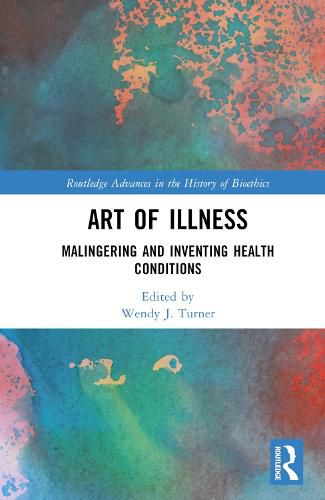Readings Newsletter
Become a Readings Member to make your shopping experience even easier.
Sign in or sign up for free!
You’re not far away from qualifying for FREE standard shipping within Australia
You’ve qualified for FREE standard shipping within Australia
The cart is loading…






There is a long history of inventing illness, such as pretending to be sick for attention or accusing others of being ill. This volume explores the art of illness, and the deceptions and truths around health and bodies, from a multiplicity of angles from antiquity to the present.
The chapters, which are based on primary-source evidence ranging from antiquity to the late twentieth century, are divided into three sections. The first part explores how the idea of faking illness was understood and conceptualized across multiple fields, locations, and time periods. The second part uses case studies to emphasize the human element of those at the center of these narratives and how their behavior was shaped by societal attitudes. The third part investigates the development of regulations and laws governing malingering and malingerers. Altogether, they paint a picture of humans doing human actions-cheating, lying, stealing, but also hiding, surviving, working.
This book's careful, accessible scholarship is a valuable resource for academics, scientists, and the sophisticated undergraduate audience interested in malingering narratives throughout history.
$9.00 standard shipping within Australia
FREE standard shipping within Australia for orders over $100.00
Express & International shipping calculated at checkout
There is a long history of inventing illness, such as pretending to be sick for attention or accusing others of being ill. This volume explores the art of illness, and the deceptions and truths around health and bodies, from a multiplicity of angles from antiquity to the present.
The chapters, which are based on primary-source evidence ranging from antiquity to the late twentieth century, are divided into three sections. The first part explores how the idea of faking illness was understood and conceptualized across multiple fields, locations, and time periods. The second part uses case studies to emphasize the human element of those at the center of these narratives and how their behavior was shaped by societal attitudes. The third part investigates the development of regulations and laws governing malingering and malingerers. Altogether, they paint a picture of humans doing human actions-cheating, lying, stealing, but also hiding, surviving, working.
This book's careful, accessible scholarship is a valuable resource for academics, scientists, and the sophisticated undergraduate audience interested in malingering narratives throughout history.